Specifying for a green building project is complex. The wrong window coverings can fail to meet certification standards, jeopardizing your project's sustainability goals and even its funding.
Green certifications like GREENGUARD[^1] and OEKO-TEX 100[^2] ensure low VOC emissions and material safety. Specifying products with these labels helps meet LEED[^3] or BREEAM[^4] standards and guarantees a healthier indoor environment for occupants.
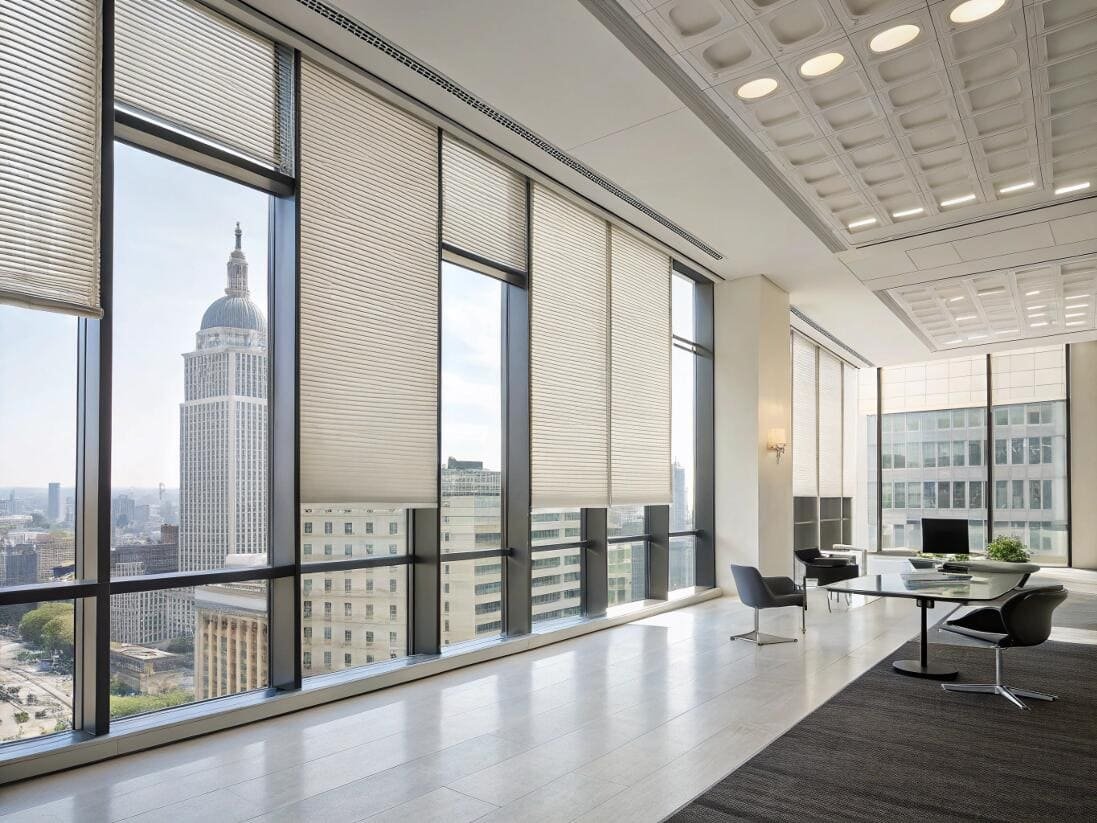
I've seen project managers like Emma get bogged down in paperwork trying to prove their material choices meet sustainability goals. These certifications aren't just logos to put on a product page; they are proof of performance and safety. Clients are starting to ask for them by name because they understand that a truly "green" building is also a healthy building. Choosing a supplier who understands these standards and can provide the correct documentation from the start saves you an enormous amount of time and risk.
What are the best insulating shades for windows?
Your project budget is being eaten alive by heating and cooling costs. Large glass windows are the main culprits, leaking energy and making spaces uncomfortable all year round.
Cellular or honeycomb shades are the best insulating window treatments. Their unique air-trapping pockets create a powerful thermal barrier[^5], significantly reducing heat loss in winter and heat gain in summer.
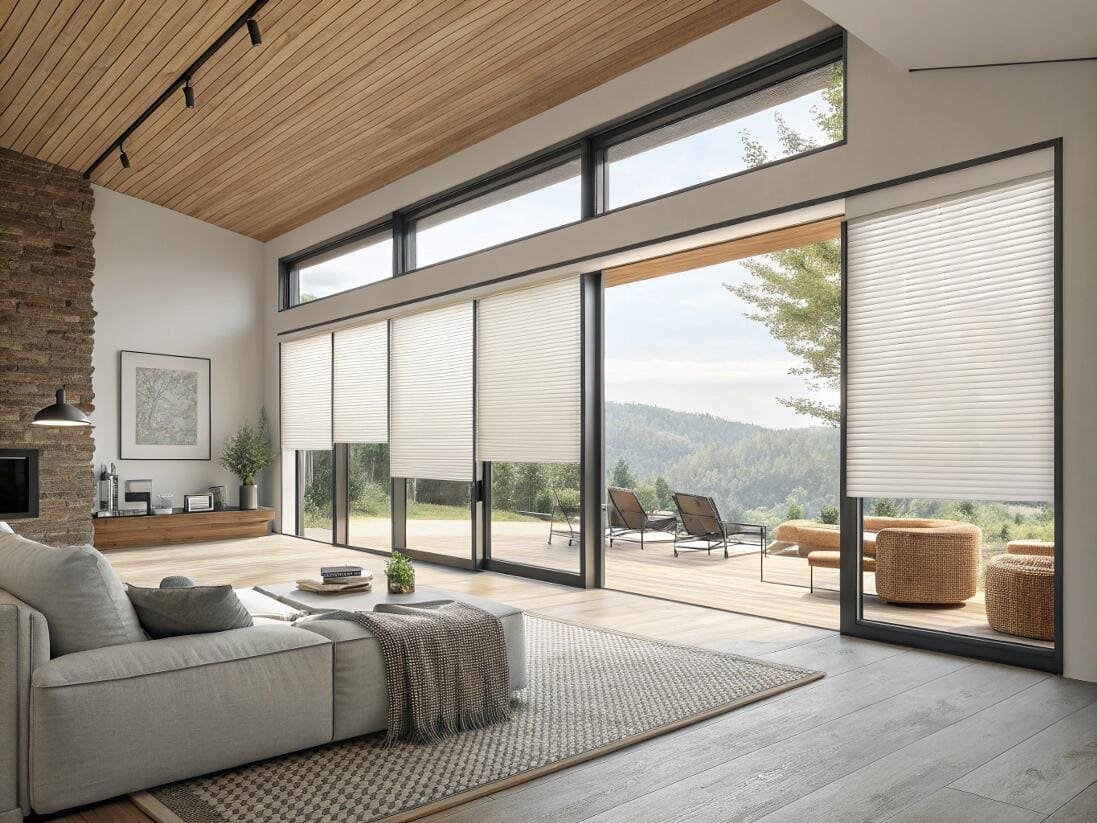
The genius of a cellular shade is its structure. Each "cell" traps a pocket of air, and still air is one of the best natural insulators there is. This design acts like a thermal shield between your indoor space and the glass of the window. In a cold climate, it can dramatically reduce how much heat escapes. In a hot climate, it blocks the sun's heat from ever entering the room. This isn't just a comfort feature; it's a direct energy-saving technology[^6]. For projects seeking LEED or other green building certifications, specifying high-performance cellular shades[^7] can contribute directly to earning points in the Energy and Atmosphere category. It's a simple choice that delivers a measurable return on investment through lower utility bills every single month.
| Window Covering Type | Insulation Level | Best For |
|---|---|---|
| Double Cell Honeycomb | Excellent | Maximum energy savings |
| Single Cell Honeycomb | Very Good | Balance of performance and cost |
| Roller Shades (Blackout) | Fair | Light blocking with some thermal benefit |
| Faux-Wood Blinds | Poor | Primarily for light control and privacy |
What is the most efficient window covering?
You want peak performance, not just good insulation. How do you choose a window covering that actively works to manage energy, light, and comfort in the most efficient way possible?
The most efficient window covering is an automated cellular shade[^8] paired with a smart home system[^9]. Automation maximizes energy savings by adjusting the shades based on the sun's position and time of day, without any manual input.
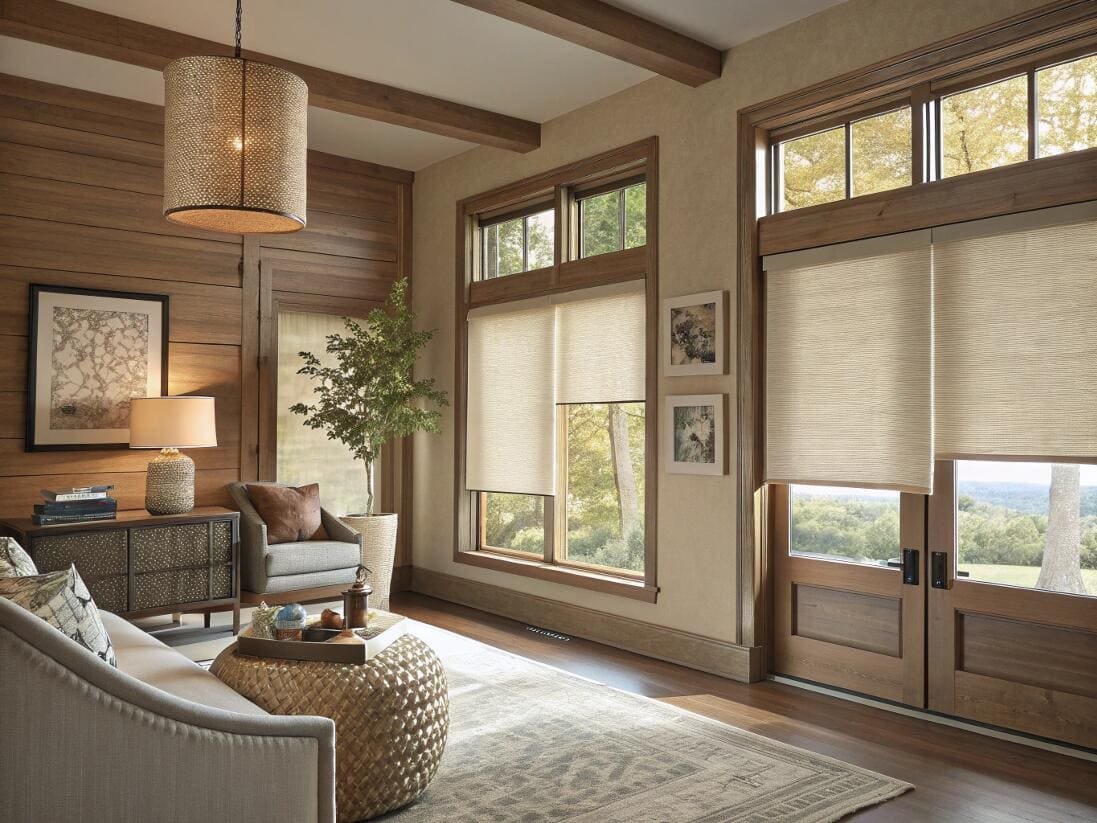
Efficiency moves beyond the material itself and into how the product is used. A cellular shade offers great passive insulation. But when you add motorization and smart controls, it becomes an active part of the building's climate control system. Think about it: you can create schedules to automatically lower shades on west-facing windows before the hot afternoon sun hits, preventing the air conditioning from having to work so hard. In the winter, you can do the reverse, opening them up to capture free solar heat. This dynamic management of solar gain is something a manual blind simply cannot achieve because it relies on someone being there to adjust it. This is the definition of efficiency: achieving the best performance with the least amount of wasted energy or effort. For high-performance buildings, this kind of automation is no longer a luxury; it's a core component.
What are the most eco-friendly window coverings?
Clients are asking for "eco-friendly" options, but the term is vague. You need to provide products that are genuinely sustainable, not just labeled with green buzzwords or "greenwashing[^10]."
The most eco-friendly coverings are those made from recycled or sustainable materials, certified for low chemical emissions (GREENGUARD Gold) and material safety (OEKO-TEX), ensuring a healthy indoor environment.
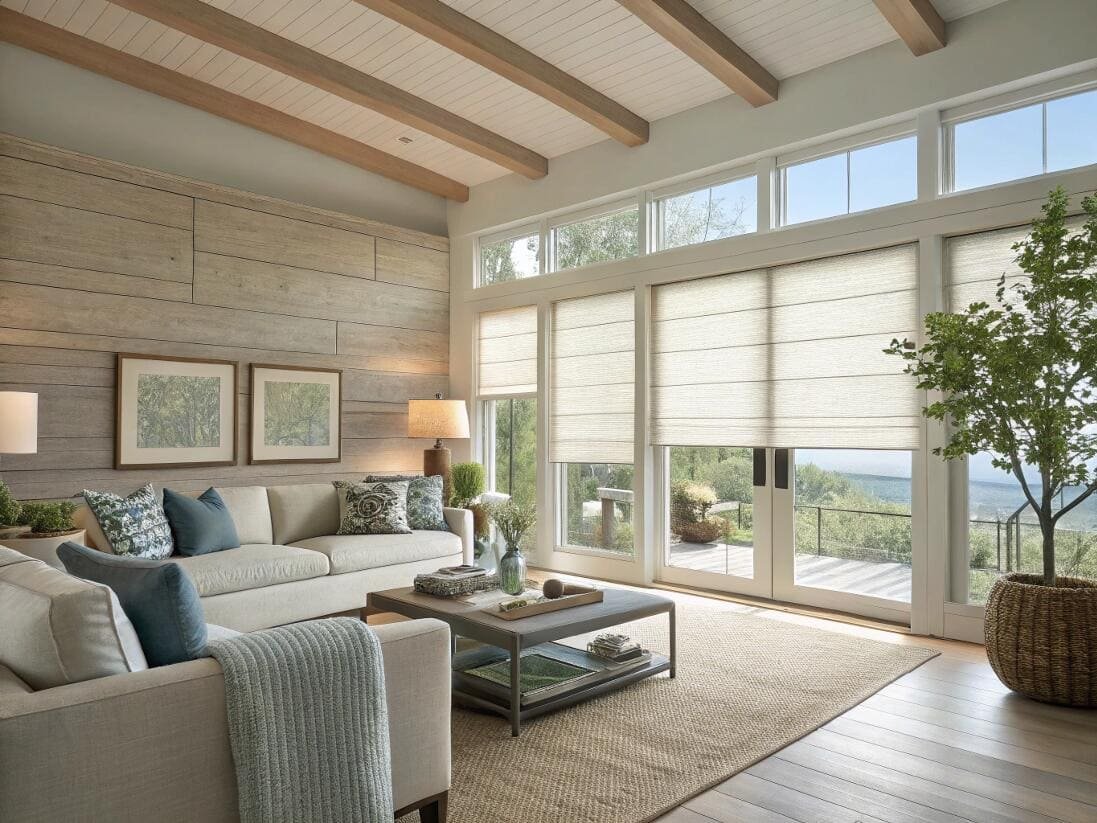
When I talk to specifiers, I break "eco-friendly" down into three key areas. First is the material source. Look for fabrics made from recycled content, such as recycled polyester[^11] (rPET) which is derived from plastic water bottles. This reduces landfill waste and uses less energy than producing virgin polyester. Second is indoor air quality. This is where certifications are critical. Products can release volatile organic compounds[^12] (VOCs) into the air for years, which is bad for human health. GREENGUARD Gold certification is the highest standard, ensuring products are safe for sensitive environments like schools and hospitals. Third is chemical safety[^13]. The OEKO-TEX STANDARD 100 certifies that every component of the product has been tested for harmful substances. A truly eco-friendly product considers the entire lifecycle, from where the material comes from to how it impacts the air you breathe.
What is the trend in window coverings in 2025?
You want your project to feel current and forward-thinking. Choosing a window covering that looks dated in just a year is a waste of money and a design failure.
The key trend for 2025 is "sustainable automation[^14]." This means combining beautiful, eco-friendly fabrics with discreet, ultra-quiet motorized systems that integrate seamlessly into smart home ecosystems for wellness and energy efficiency.
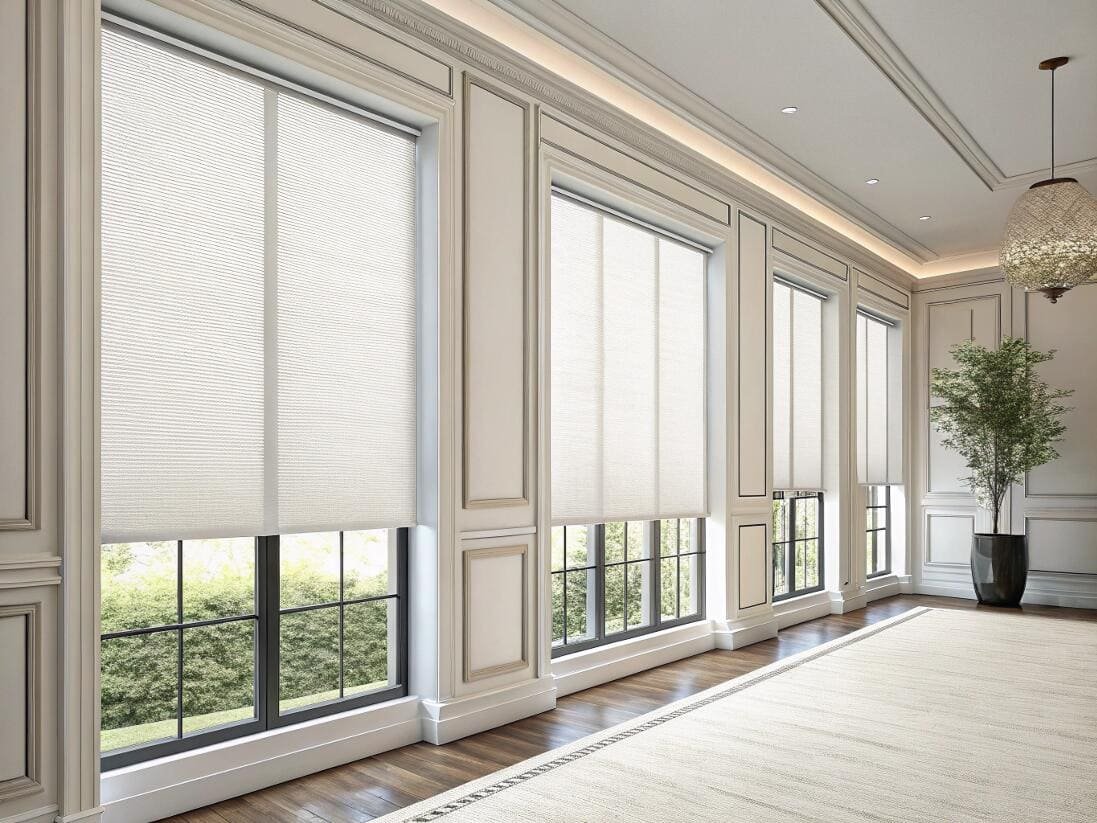
The future of window coverings is a blend of high-tech and high-touch. We're moving past the cold, clinical look of early smart homes into what I call "warm tech." This means using fabrics with natural textures and warmth but with the performance and durability of engineered materials. Imagine a fabric that looks like linen but is actually a durable, recycled, and fire-retardant material. Then, you pair that beautiful fabric with the latest generation of quiet, powerful motors that connect to smart home platforms like Zigbee or Matter. The focus is shifting towards human-centric benefits, like programming shades to follow the sun's natural daily rhythm. This helps regulate occupants' circadian rhythms and improves well-being. This combination of sustainable aesthetics and intelligent function is the new standard for modern design.
What window coverings never go out of style?
Trends come and go, but your project needs to have lasting value. How do you select a window covering that will still look classic, beautiful, and elegant ten years from now?
Simple, high-quality roller shades in neutral colors like white, off-white, light grey, or black are timeless. Their minimalist design complements virtually any architectural style, ensuring they never look dated.
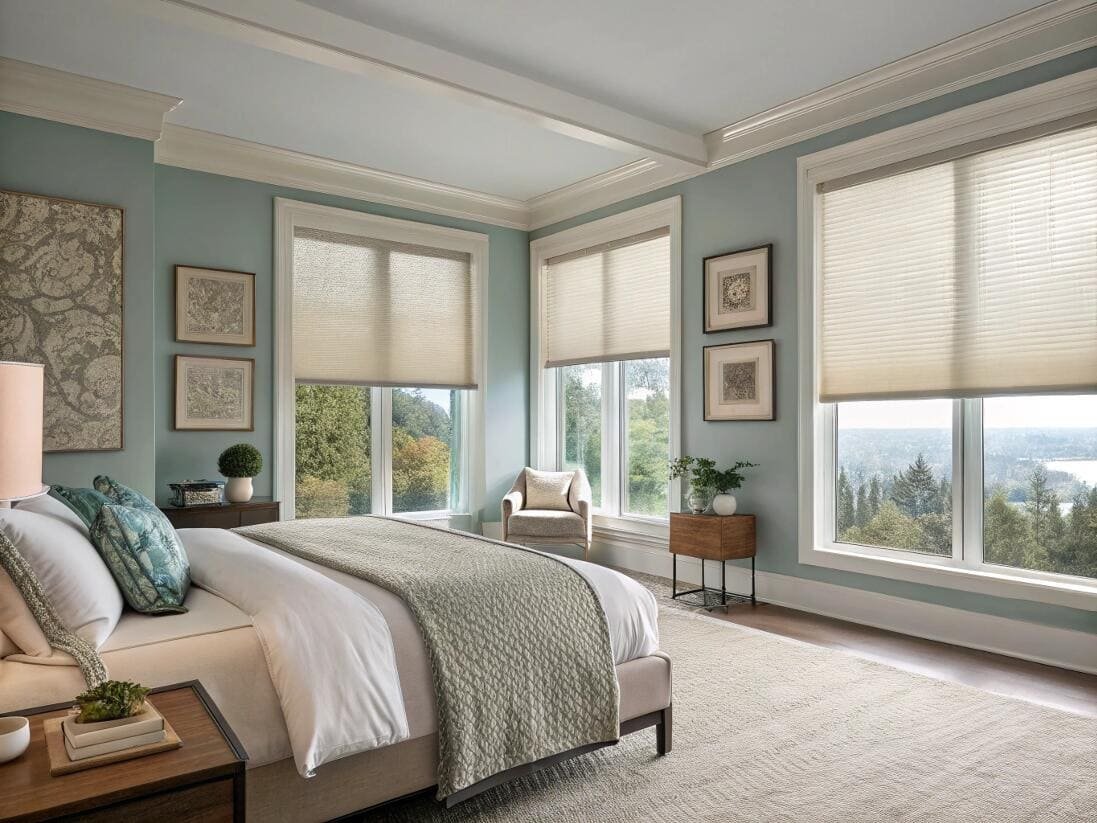
The reason roller shades are a timeless choice is their simplicity. They are the ultimate functional object. When they are open, they retract into a very small, discreet cassette, leaving the window and the view completely unobstructed. When they are closed, they provide a clean, uniform plane of color. This minimalist nature means they don't compete with the furniture, the artwork, or the architecture; they support it. For a project with long-term value, like a hotel or residential tower, this versatility is a huge asset. The key to making them last is investing in quality. A cheap mechanism will fail, sag, or operate poorly, which is never stylish. But a high-quality roller shade, built with a durable tube and a smooth clutch or a reliable motor, is an investment that will look and function beautifully for decades.
What MOQ, lead time, and labeling do green projects expect?
You're managing a green-certified project with strict procurement rules. A supplier who doesn't understand your requirements for documentation, lead times[^15], and packaging can cause major compliance headaches.
Green projects typically expect suppliers to offer flexible MOQs, provide clear 6-8 week lead times for certified materials, and use eco-friendly packaging[^16] with labels that clearly display the product's green certifications.
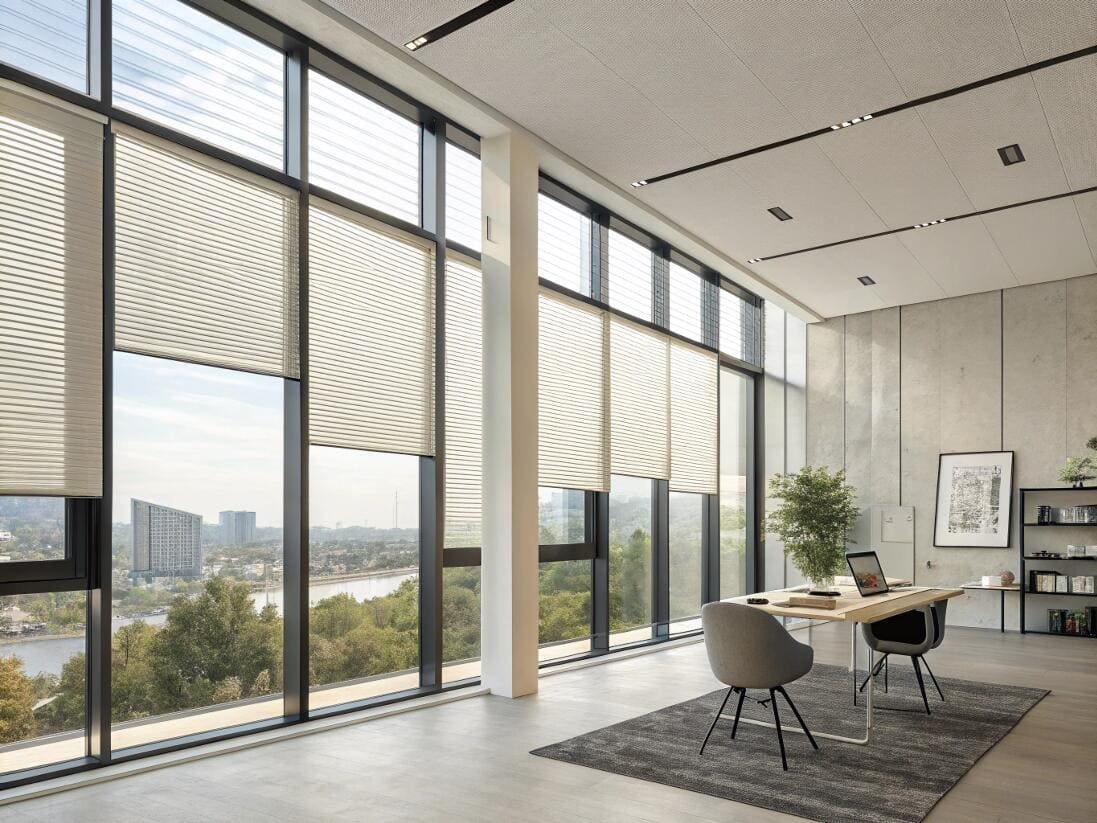
As a supplier to large projects, I know that fulfilling these requirements is part of the job. B2B buyers working on LEED or BREEAM certified buildings have a different set of needs.
First, Minimum Order Quantity (MOQ)[^17] needs to be flexible. You might need a specific high-performance fabric for just a few west-facing offices, not the entire building. A professional supplier must be able to accommodate these smaller, custom runs.
Second, Lead Time. We tell our partners to plan for a 6-8 week window for products with specialized green fabrics. These materials aren't always in stock and need to be ordered from the mill. This realistic timeline prevents delays.
Finally, Documentation and Labeling. This is non-negotiable. We provide the official certificates for every certified material used. We also ensure our packaging labels clearly show the certifications, so when the materials arrive on-site, the contractor can easily verify they have received the correct product. It's about making compliance easy for our clients.
Conclusion
Choosing green window coverings is about performance, not just materials. Prioritize certified, insulating, and smartly automated products to deliver lasting value, occupant well-being, and true sustainability for your project.
---
[^1]: Learn about GREENGUARD certification and its role in ensuring low VOC emissions for healthier indoor environments.
[^2]: Discover how OEKO-TEX 100 certification ensures material safety and contributes to eco-friendly choices.
[^3]: Find out how to achieve LEED certification and the benefits it brings to your building project.
[^4]: Understand BREEAM certification and its significance in promoting sustainable building practices.
[^5]: Learn about the science behind thermal barriers and their role in energy efficiency.
[^6]: Discover innovative technologies that enhance energy efficiency in window coverings.
[^7]: Explore the energy-saving benefits of cellular shades and how they improve indoor comfort.
[^8]: Discover how automated cellular shades enhance energy efficiency and comfort in modern homes.
[^9]: Explore the integration of smart home systems with window coverings for optimal energy management.
[^10]: Learn how to identify greenwashing and ensure your choices are genuinely sustainable.
[^11]: Learn about the environmental advantages of recycled polyester and its impact on sustainability.
[^12]: Understand the risks associated with VOCs and how to choose low-emission products.
[^13]: Explore the importance of chemical safety in ensuring healthy indoor environments.
[^14]: Discover how sustainable automation enhances energy efficiency and modern design.
[^15]: Find out what to expect regarding lead times for certified green materials.
[^16]: Explore the benefits of eco-friendly packaging in promoting sustainability in projects.
[^17]: Understand the significance of MOQ in sourcing materials for green building projects.Partner with VelaBlinds for Your Next Project
Smart window treatments shouldn't be complicated. After working with 500+ distributors and contractors worldwide, I've streamlined the process to get you quality products, competitive pricing, and reliable support - every time.
Why project professionals choose VelaBlinds:
- ✅ Fast, Accurate Quotes - Detailed specs and pricing within 24 hours
- ✅ Transparent Pricing - No hidden fees, volume discounts clearly outlined
- ✅ Quality Assurance - Direct partnerships with certified OEM manufacturers
- ✅ Project Support - Dedicated account manager from quote to delivery
Start your next project:
📧 Quick Quote: Send your requirements to info@velablinds.com
📱 Direct Contact: WhatsApp +86 137 2012 8317
🌐 Browse Solutions: https://velablinds.com/
📁 Product Resources: Access spec sheets, catalogs & project files
Paul Chen, Founder
"I built VelaBlinds to solve the real challenges I faced as a project buyer - long lead times, unclear specs, and unreliable suppliers. Let's discuss how we can power your projects with smarter blinds."
Serving distributors and contractors across North America, Europe, and Australia since 2018.




